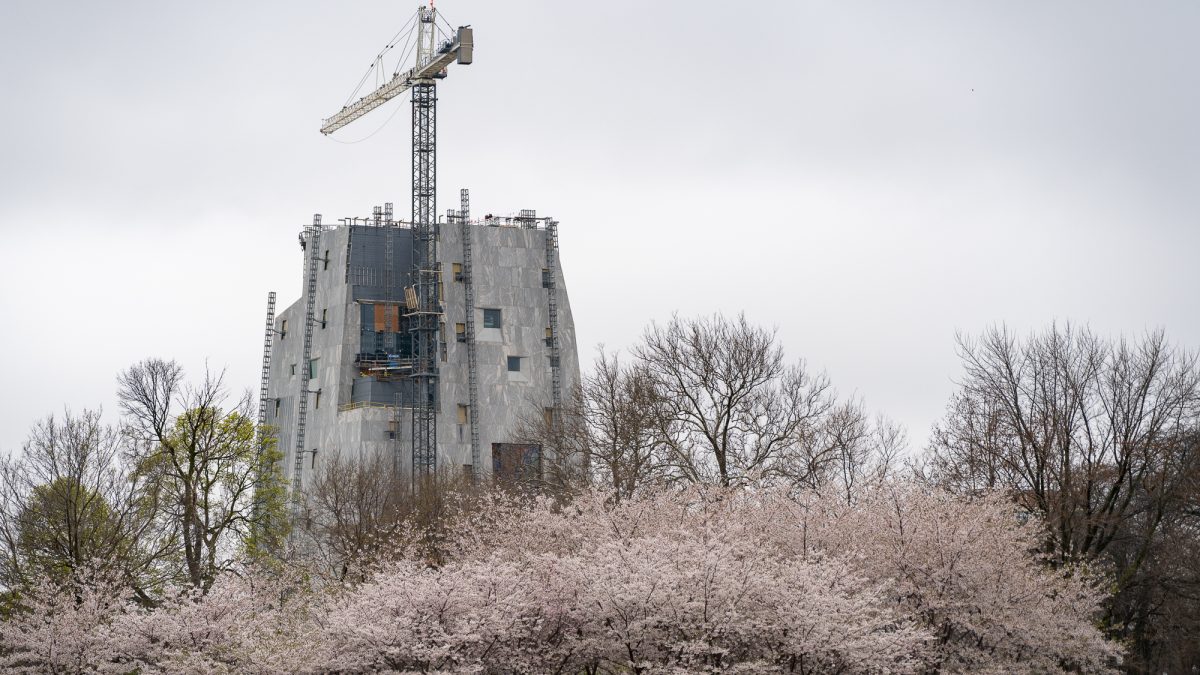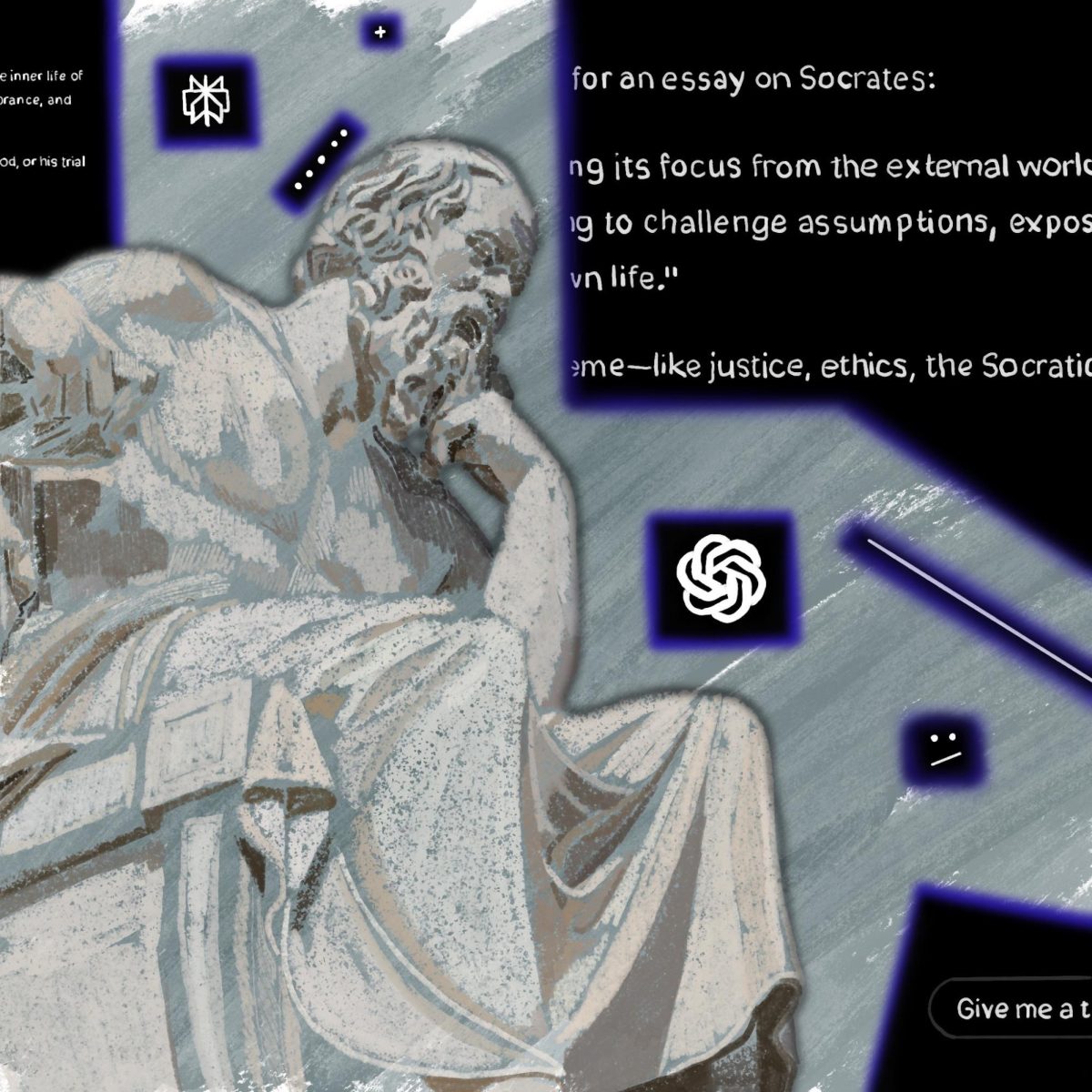This past weekend, we celebrated the grand opening of the new Logan Center for the Arts. I had the opportunity to attend the event and was impressed by the student musician talent and the building itself. As I stood on the 11th floor balcony overlooking campus, the panoramic beauty of the vista struck me. But I also went to the other side of the 11th floor, the one that overlooks the rest of the South Side. I was struck by a completely different feeling there—one of contextual incongruity.
The Logan Center has 184,000 square feet of floor space and cost $114 million to construct. Its handsome beige façade is composed of Missouri limestone that was trucked in from 320 miles away, and its floors are made of Pietra Luna marble imported from China. It is a beautiful building that will serve the University and its students for decades to come. However, it is also impossible to deny that its opulence stands in marked contrast to the surrounding region. Woodlawn’s median income is $22,000, about half the median income for Chicago as a whole. The average cost per square foot of real estate in Woodlawn is $42. The cost per square foot of the Logan Center? $614, or about 14 times the price of each square foot of the surrounding neighborhood.
Please don’t misunderstand me: My point is not that the University should skimp when it chooses to construct new buildings. On the contrary, I believe it should show the community, the city of Chicago, and the rest of the world that we have a beautiful campus. Rather, I am calling for the University to pay closer attention to the context of its construction and expansion plans. Instead of building a giant beautiful arts center in the middle of a low-income neighborhood, why not allocate the money in a variety of ways that will provide direct benefits to both students and community residents? According to the University, the Logan Center was constructed as part of an initiative to address the need for arts on campus. I believe it has admirably achieved that goal, but I fear that it has totally missed an even broader one: to make the University community better for all within its reaches.
Consider instead if the site of the Logan Center had been used for the construction of a new community center. Such a center could be a rare place where the University community and surrounding residents could interact on even ground. Leveraging its location next to the Midway, it could become a prime spot for recreation and athletics. The space could become the epicenter for the University’s civic outreach efforts and serve as a classroom and a learning space. The facility could also serve as an arts center, with studio spaces and a small auditorium that would also allow an increased level of collaboration between students and community members. Such an alternative allows for not only the same level of engagement for the University community but also needed resources for members of the Woodlawn community. I would concede that a community center is not the only alternative to the Logan Center, nor is it necessarily a superior one. What I aim to demonstrate is simply that it is one with an entirely different goal in mind—a goal that I think University administrators should be mindful of.
The Logan Center is the most recent in a series of new buildings that were constructed in the last 10 years with the help of major alumni gifts. The Logans donated $35 million to the construction of their namesake arts center. Joe Mansueto, the founder and CEO of the Morningstar investment research firm, and his wife Rika donated $25 million to build the new library. Lawyer Gerald Ratner donated $15 million for the construction of a new gym. It is my emphatic opinion that these alumni should be strongly commended for their generosity to the University. Their gifts are larger than what almost anyone will donate in their entire lifetimes, and I can offer nothing but praise to these donors. However, I would warn the University to be mindful of its role in the gift giving process. As the recipient of specifically designated charity, the University has a responsibility to steer its donors in the direction of its true needs, no matter their scope.
Though it may be tempting to entice donors with the promise of new construction named after them, the University needs to consider directing future large gifts in a manner that advances less tangible causes. In addition to a new framework for the University to interact with the community, expansions to financial aid and scholarships are also needed. Again, context is critical. For instance, with a shaky economy and high unemployment, a major gift in the style of the Odyssey endowment would be welcome and appropriate.
Though it is impossible to point to a single reason why the University has pursued so much new construction in the past decade, I believe it has to do with the marketability and prestige of the institution. A landscape of beautiful new buildings is sure to attract prospective students and media attention. However, I feel that less flashy alternatives could accomplish the goal of promoting the University to an even greater degree. If, for instance, the U of C were to overtake Harvard’s $160 million financial aid budget, it would be sure to attract national media attention. The same logic follows for an aggressive community outreach plan or any other number of alternatives. There is no one best plan for the University, but whatever that plan may be, the context is critical.
Taylor Schwimmer is a third-year in the College majoring in public policy studies.







